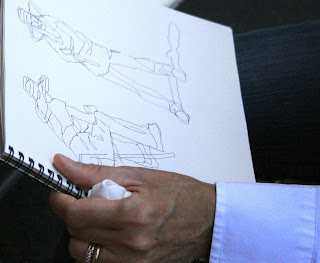 8 x 10, oil on canvas
8 x 10, oil on canvasMy aim is to avoid overworking the canvas, capture what I see and leave it alone.
WHY is that so tough? (eek)
"Wherever the great dilemma exists is where the great growth is, too. It would be very nice for nervous types like me if things were black and white, and you could tell where one thing ended and the next thing began, but as Einstein taught us, everything in the future and the past is right here now. There's always something ending and something beginning"...Anne Lamont











